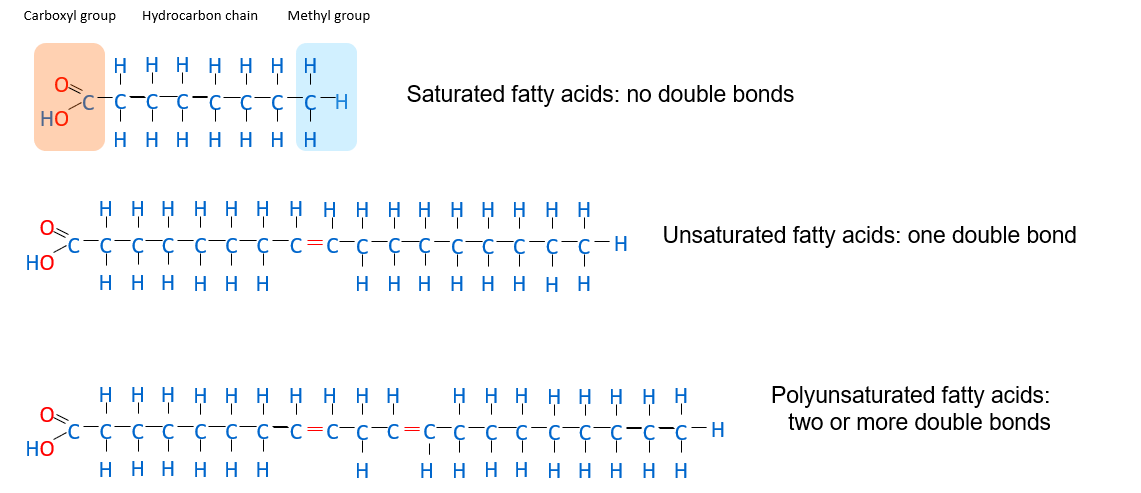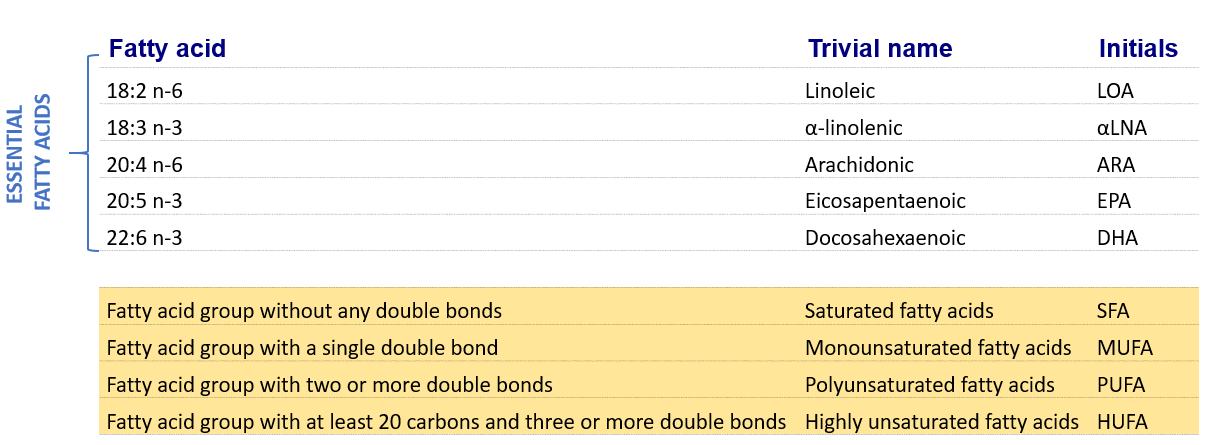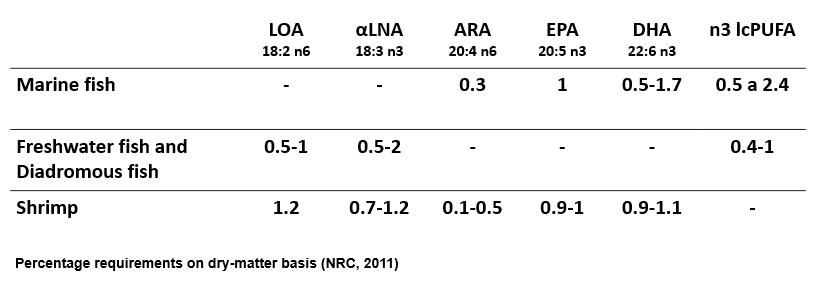Fatty acids and other lipids:
Lipids are organic compounds including fats, oils, hormones, and certain membrane components that are grouped together due to their insolubility in water.

Figure 7. Schematic illustration of general lipid classification and functions.
They can be divided in two groups in terms of its functionality: 1) Polar lipids, such as phospholipids, play predominantly structural roles; and 2) Neutral lipids that are primarily responsible for the storage of energy in the form of triacylglycerols (TAG). Some specific fatty acids also play a critical role in controlling and regulating metabolism in addition to providing energy and structural components. Fatty acids are often found as components of complex lipid molecules such as fats and phospholipids.

Figure 8. Schematic representations of saturated, unsaturated, and polyunsaturated fatty acids.
A fatty acid contains a carboxylic acid group and a hydrocarbon chain, which may be unsaturated or saturated. A saturated fatty acid tail only consists of carbon-carbon single bonds, and an unsaturated fatty acid has at least one carbon-carbon double or triple bond. Fatty acids are distinguished from one another by the lengths of their hydrocarbon tails and degrees of unsaturation. The fatty acids listed below are recognized as essential fatty acids (EFA) for the aquaculture species, but the optimal dietary inclusion levels and the optimal balance between the fatty-acid classes and chain lengths vary among species.

Figure 9. Essential fatty acids list for aquaculture species with respective trivial names and initials.
The list below is given according to the importance of providing the greatest EFA value to most species:
- Docosahexaenoic acid (DHA);
- Eicosapentaenoic (EPA);
- Arachidonic (ARA);
- Linolenic (LNA);
- linoleic (LOA);
Fish larvae and crustaceans are particularly affected by EFAs since they lack the ability to digest and absorb lipids, and have a higher demand for EFAs during the development of eyes, brain, and other neural tissues. Thus, one important aspect is that fish can selectively retain ingested and synthesized fatty acids, preserving the most essential functions.
For the main farmed fish, most of the energy, protein, and amino acid requirements are known. However, there are many gaps in relation to the essential fatty acid requirements. Generally, marine fish require EPA and/or DHA whereas freshwater fish require either linoleic acid, linolenic acid (18:3 n‐3), or both. The type of ecosystem from which the fish originate (freshwater, estuarine, or marine) appears to influence the fish's EFA requirements, as shown in the fatty acid requirements table below (Table 4).

Table 4. Fatty acid requirements of marine, freshwater, and diadromous fish, and shrimp
Marine fish and shrimp normally require ARA, EPA, and DHA, therefore showing a specific requirement for these long-chain polyunsaturated fatty acids (n3 lcPUFA). On the other hand, freshwater and diadromous fish typically require other types of fatty acids (LOA and αLNA) but also require some n3 lcPUFA.
Freshwater fish, which generally possess the ability to desaturate and chain elongate C18 EFAs to longer-chain highly unsaturated fatty acids (HUFAs), only have a requirement for linoleic acid or linolenic acid or both. Check out the article here to learn more about BIOCONVERSION in Tilapia.
EPA and DHA requirements of fish respond to the nutrient content of marine environments because primary sources, such as marine algae and planktons contain high levels of EPA and DHA while containing low levels of linoleic and linolenic acid.
The table below (Table 5) presents the fatty acid requirements of some fish species and reflects the differences in requirements according to the environment in which they live.

Table 5. Requirements (% of total fatty acids) for various fish species (on a dry-matter basis)
In spite the fact that at least five fatty acids are considered essential for fish (LA, LNA, AA, EPA and DHA), information on quality, quantity and the ideal ratio between the different fatty acid classes (the n-3:n- ratio 6) or between fatty acids of different chain lengths (C18:C20:C22) are species-specific and, in many cases, simply unknown. In addition, a better understanding of lipid metabolism, including the molecular basis of HUFA biosynthesis, will allow to more safely determine the nutritional requirements of fatty acids and manipulate and even optimize the conversion of fatty acids from different lipid sources in the fish diet.
